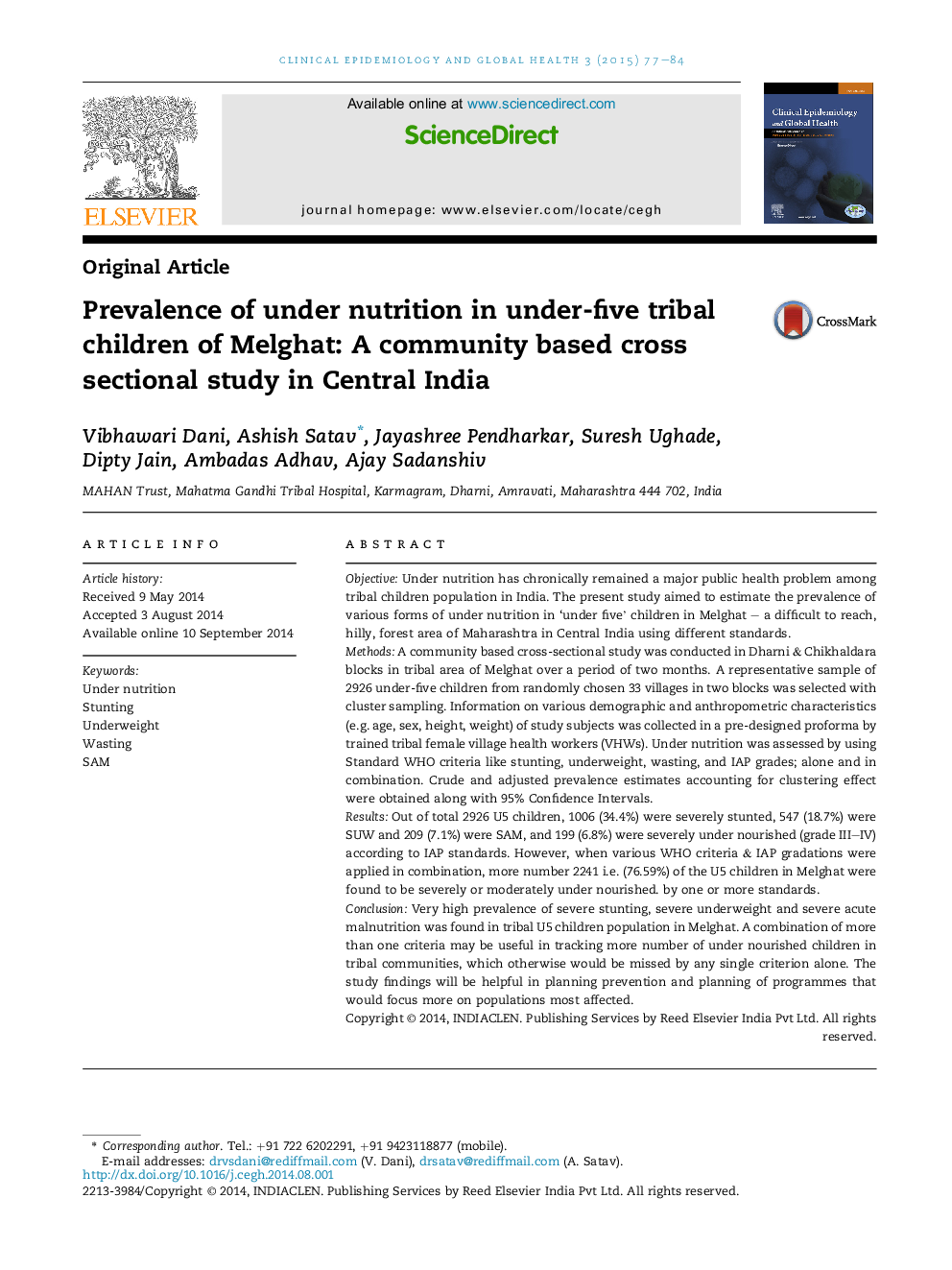| Article ID | Journal | Published Year | Pages | File Type |
|---|---|---|---|---|
| 3396247 | Clinical Epidemiology and Global Health | 2015 | 8 Pages |
ObjectiveUnder nutrition has chronically remained a major public health problem among tribal children population in India. The present study aimed to estimate the prevalence of various forms of under nutrition in ‘under five’ children in Melghat – a difficult to reach, hilly, forest area of Maharashtra in Central India using different standards.MethodsA community based cross-sectional study was conducted in Dharni & Chikhaldara blocks in tribal area of Melghat over a period of two months. A representative sample of 2926 under-five children from randomly chosen 33 villages in two blocks was selected with cluster sampling. Information on various demographic and anthropometric characteristics (e.g. age, sex, height, weight) of study subjects was collected in a pre-designed proforma by trained tribal female village health workers (VHWs). Under nutrition was assessed by using Standard WHO criteria like stunting, underweight, wasting, and IAP grades; alone and in combination. Crude and adjusted prevalence estimates accounting for clustering effect were obtained along with 95% Confidence Intervals.ResultsOut of total 2926 U5 children, 1006 (34.4%) were severely stunted, 547 (18.7%) were SUW and 209 (7.1%) were SAM, and 199 (6.8%) were severely under nourished (grade III–IV) according to IAP standards. However, when various WHO criteria & IAP gradations were applied in combination, more number 2241 i.e. (76.59%) of the U5 children in Melghat were found to be severely or moderately under nourished. by one or more standards.ConclusionVery high prevalence of severe stunting, severe underweight and severe acute malnutrition was found in tribal U5 children population in Melghat. A combination of more than one criteria may be useful in tracking more number of under nourished children in tribal communities, which otherwise would be missed by any single criterion alone. The study findings will be helpful in planning prevention and planning of programmes that would focus more on populations most affected.
